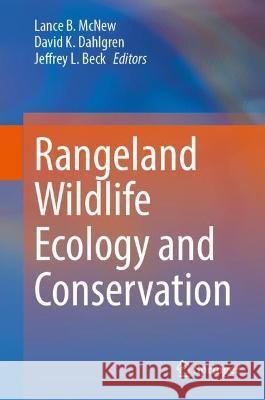Rangeland Wildlife Ecology and Conservation » książka
topmenu
Rangeland Wildlife Ecology and Conservation
ISBN-13: 9783031340369 / Angielski / Twarda / 2023
Rangeland Wildlife Ecology and Conservation
ISBN-13: 9783031340369 / Angielski / Twarda / 2023
cena 201,72 zł
(netto: 192,11 VAT: 5%)
Najniższa cena z 30 dni: 192,74 zł
(netto: 192,11 VAT: 5%)
Najniższa cena z 30 dni: 192,74 zł
Termin realizacji zamówienia:
ok. 22 dni roboczych
Bez gwarancji dostawy przed świętami
ok. 22 dni roboczych
Bez gwarancji dostawy przed świętami
Darmowa dostawa!
This open access book reviews the importance of ecological functioning within rangelands considering the complex inter-relationships of production agriculture, ecosystem services, biodiversity, and wildlife habitat.
More than half of all lands worldwide, and up to 70% of the western USA, are classified as rangelands—uncultivated lands that often support grazing by domestic livestock. The rangelands of North America provide a vast array of goods and services, including significant economic benefit to local communities, while providing critical habitat for hundreds of species of fish and wildlife.
This book provides compendium of recent data and synthesis from more than 100 experts in wildlife and rangeland ecology in Western North America. It provides a current and in-depth synthesis of knowledge related to wildlife ecology in rangeland ecosystems, and the tools used to manage them, to serve current and future wildlife biologists and rangeland managers in the working landscapes of the West. The book also identifies information gaps and serves as a jumping-off point for future research of wildlife in rangeland ecosystems. While the content focuses on wildlife ecology and management in rangelands of Western North America, the material has important implications for rangeland ecosystems worldwide.











